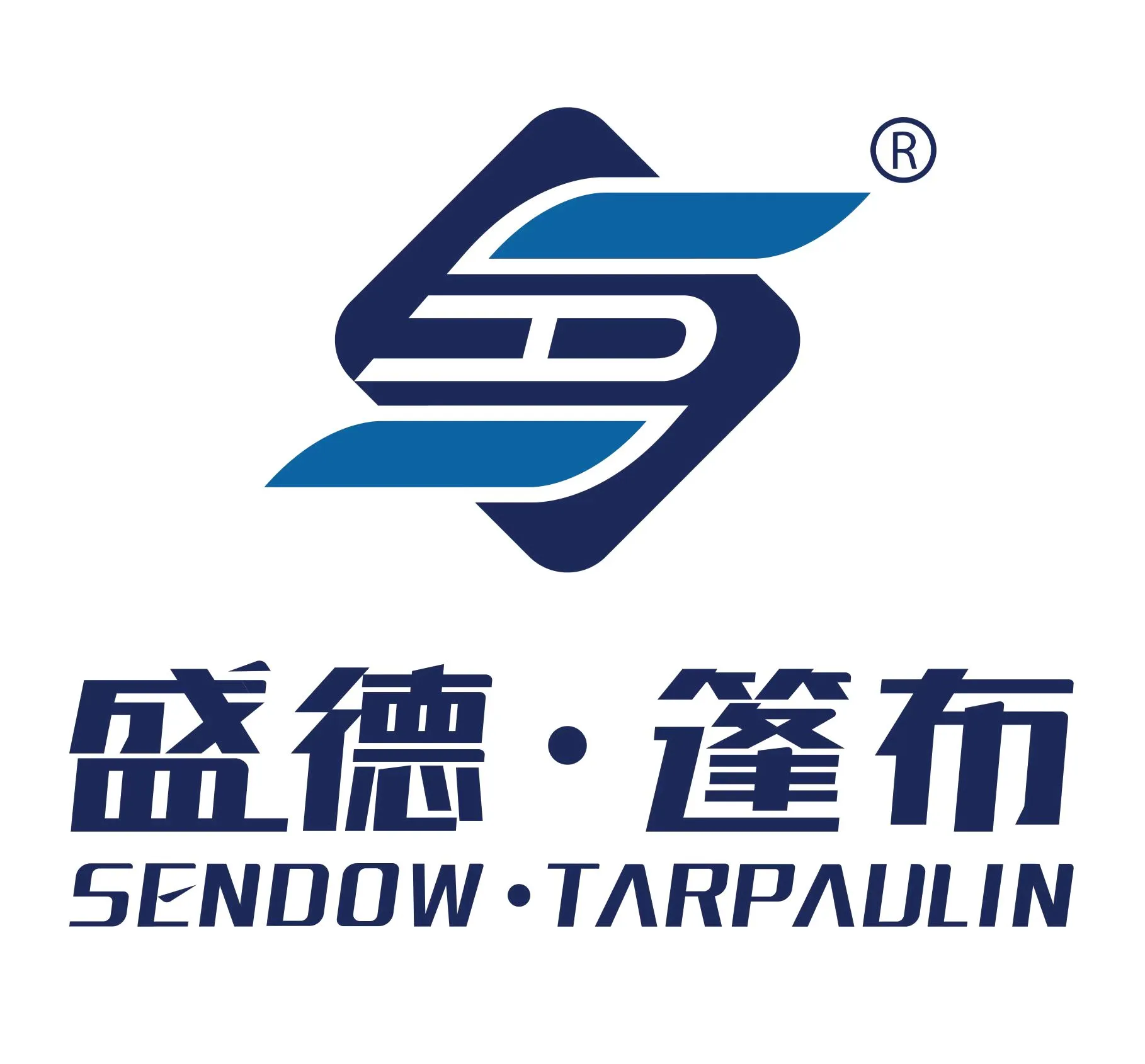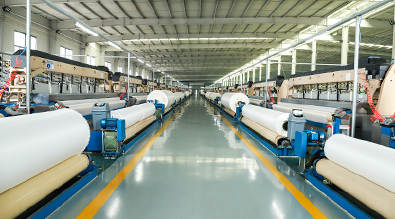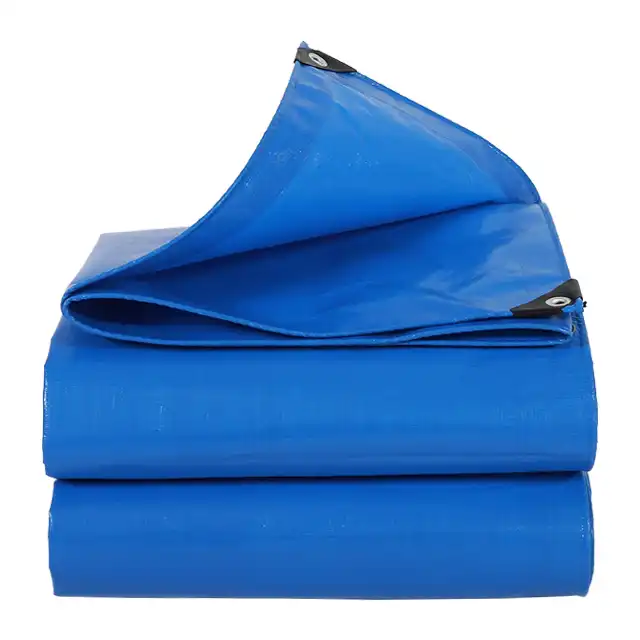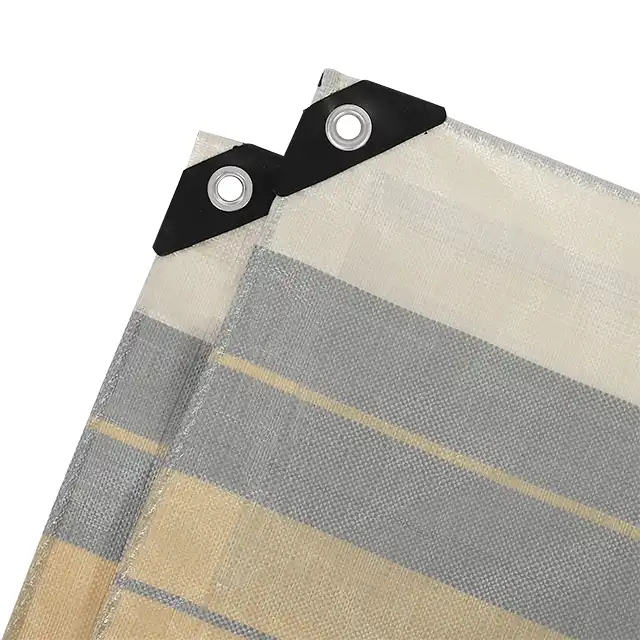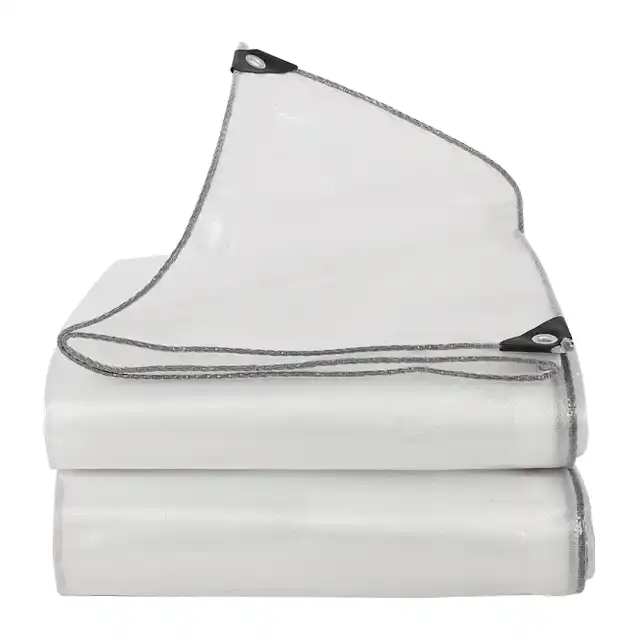The Best Methods for Cleaning a Large Tarp: Tips & Tricks
Maintaining the cleanliness of your large tarpaulin is essential for preserving its durability and functionality over time. Whether you use tarps for truck covers, construction projects, agricultural purposes, or outdoor protection, proper cleaning techniques can significantly extend their lifespan and maintain their protective qualities. In this comprehensive guide, we'll explore the most effective cleaning methods and practical tips for maintaining large tarps, ensuring they remain in optimal condition even after extensive use in challenging environments. From removing stubborn stains to preventing mold growth, these professional cleaning strategies will help you maximize the value of your high-quality tarpaulin investment.
Understanding Tarp Materials and Their Cleaning Requirements

Different Types of Tarpaulin and Their Specific Cleaning Needs
When approaching the task of cleaning a large tarpaulin, it's crucial to first understand the material composition of your specific tarp. High-density polyethylene (HDPE) woven fabric with low-density polyethylene (LDPE) coating, such as those manufactured by industry leaders like Linyi Shengde Plastic Co., require different cleaning approaches than canvas or vinyl alternatives. These PE tarpaulins, ranging from lightweight 65gsm to heavy-duty 280gsm weights, are engineered with tightly woven polyethylene fibers and laminated on both sides for superior durability. When cleaning such materials, it's important to note that while they're designed to be 100% waterproof and tear-resistant with UV treatment, harsh chemical cleaners can potentially compromise these protective coatings. The mesh count, typically ranging from 10x10 to 14x14 in quality tarps, creates a structure that can trap dirt in the tiny crevices between threads. Understanding your tarpaulin's specific material composition allows you to select appropriate cleaning methods that won't damage the waterproof coating or compromise the material's integrity. For instance, tarps used as truck covers or for aquaculture applications may accumulate different types of debris and require specialized cleaning approaches to maintain their beneficial features like anti-freezing, anti-corrosion, and shrink-proof qualities.
Common Contaminants and Stains on Large Tarps
Large tarpaulins used across various applications inevitably encounter different types of contaminants. When used as wood covers or for goods protection, tarps often accumulate dust, pollen, bird droppings, and tree sap. Truck covers and car canopies frequently collect road grime, salt residue, and automotive fluids. Agricultural tarpaulins used in greenhouses or as impermeable tarps for aquaculture may develop algae, mold, and mineral deposits. Each of these contaminants presents unique cleaning challenges. For example, biological growth like mold and mildew tends to penetrate deeper into the tarpaulin fabric if left untreated, potentially compromising the material's waterproof qualities. Oil-based stains from machinery or vehicles can be particularly stubborn on PE tarpaulin surfaces. Industrial applications might expose tarps to chemical residues requiring specialized cleaning approaches. Identifying the specific contaminants affecting your tarpaulin is the first step in selecting the appropriate cleaning method. The highly durable PE tarpaulins from quality manufacturers like Sendow are designed to withstand numerous environmental challenges, but proper identification of stains ensures you'll use cleaning agents that effectively remove contaminants without damaging the tarp's protective coatings or compromising its arctic flexibility and other specialized features.
Pre-Cleaning Assessment and Preparation
Before beginning the cleaning process for a large tarpaulin, a thorough assessment is essential to determine the most effective approach. Start by laying the tarp flat on a clean, spacious surface—ideally outdoors where drainage is available. Carefully inspect the entire surface, paying special attention to seams, grommets, and reinforced edges, which often trap dirt and debris. Note any tears, weakened areas, or damage to the material that might require extra caution during cleaning. For Middle-Duty PE tarpaulins with weights between 100gsm-180gsm, handling should be particularly careful around heat-sealed seams. The preparation phase should include gathering all necessary supplies: soft brushes, microfiber cloths, appropriate cleaning solutions, and a water source. For larger commercial-grade tarps with maximum widths of 5.1 meters, you might need to section off areas for systematic cleaning. Before applying any cleaning solution, it's advisable to perform a spot test on an inconspicuous area to ensure the solution won't affect the tarp's color or structural integrity. This is especially important for custom-colored tarpaulins with specialized UV treatments ranging from 1%-7%. Remove any loose debris by gently shaking or brushing the tarp, which prevents scratching the surface during the washing process. For waterproof tarpaulins with 7-12 mil thickness, ensuring proper drainage during cleaning helps prevent water from pooling and potentially damaging the material. This preparation stage sets the foundation for effective cleaning while preserving the tarp's essential waterproof, tear-resistant qualities that make them valuable for applications ranging from leisure tents to truck covers.
Professional Cleaning Methods for Different Situations
Gentle Cleaning Techniques for Regular Maintenance
Regular maintenance cleaning of tarpaulin is essential for preserving its functionality and appearance over time. For routine cleaning of large PE tarpaulins used in applications like sun shade covers or picnic pads, a gentle approach works best to maintain the tarp's waterproof integrity. Start with a soft-bristled brush or broom to sweep away loose debris, working from top to bottom in consistent, overlapping strokes. For general cleaning of high-quality tarpaulins like those produced by Sendow with their 4000MT monthly capacity, prepare a solution of mild soap (dish detergent works well) and lukewarm water. Using a soft sponge or cloth, work the solution into the tarpaulin surface with circular motions, paying special attention to seams and corners where dirt accumulates. For extremely large tarps with widths up to 5.1 meters, consider sectioning your approach to ensure thorough cleaning. The easy-to-handle nature of properly manufactured PE tarpaulins makes this process manageable. After cleaning, thoroughly rinse the tarpaulin with clean water, ensuring all soap residue is removed as this can deteriorate the waterproof coating over time. For tarps with UV treatment percentages between 1%-7%, proper rinsing is particularly important to maintain their sun protection qualities. Allow the tarpaulin to dry completely before folding or storing to prevent mold growth, taking advantage of the material's shrink-proof features. This gentle maintenance approach performed every few months helps preserve the tarpaulin's tear resistance and waterproof capabilities, extending its usable lifespan significantly while maintaining its essential properties for applications ranging from leisure use to commercial protection.
Tackling Stubborn Stains and Heavy Soiling
When dealing with heavily soiled tarpaulins or stubborn stains that resist regular cleaning methods, more targeted approaches are necessary. For oil-based stains on truck covers or goods protection tarps, apply a small amount of mild degreasing agent specifically formulated for plastic surfaces. Work the solution into the stain using a soft brush, being careful not to apply excessive pressure that might damage the tarpaulin's LDPE coating. For particularly stubborn areas on high-quality PE tarpaulins with weights ranging from 65gsm to 280gsm, create a paste using baking soda and water, apply it to the stain, and let it sit for 15-20 minutes before gently scrubbing with a soft brush. Biological contaminants like mold, mildew, or algae that commonly develop on tarps used in aquaculture or greenhouse applications require special attention. Create a solution of one part white vinegar to four parts water, or use a mild bleach solution (one part bleach to ten parts water) for white or light-colored tarps. Apply the solution to affected areas, allow it to penetrate for 10-15 minutes, then scrub gently with a soft brush. The highly durable and anti-corrosion properties of quality tarpaulins from manufacturers like Linyi Shengde Plastic Co. mean they can withstand these cleaning agents when used properly. Rust stains from metal grommets or nearby equipment may require a specialized rust remover safe for use on plastic materials. For tarps with arctic flexibility qualities used in extreme environments, ensure any specialized cleaning agents are completely rinsed away to maintain the tarp's performance characteristics. After treating stubborn stains, always rinse thoroughly with clean water and allow complete drying before storage to preserve the tarp's waterproof integrity and tear resistance that make them valuable for applications ranging from construction covers to agricultural protection.
Machine Washing and Professional Cleaning Options
For smaller tarpaulins or when manual cleaning becomes impractical for very large sheets, machine washing and professional cleaning services offer viable alternatives. Certain medium-duty PE tarpaulins with weights between 100gsm-180gsm and appropriate dimensions can be machine washed with care. Before attempting machine washing, check for any tears, loose grommets, or weakened areas that might worsen during the process. Remove any metal components if possible, and fold the tarp to fit comfortably in a commercial-sized washing machine without cramming. Use cold water and a gentle cycle with mild detergent specifically formulated for synthetic materials. Avoid bleach and fabric softeners which can damage the tarpaulin's waterproof coating and compromise its tear-resistant properties. For extremely large industrial tarpaulins manufactured with high-strength yarn for extra UV protection, professional cleaning services with specialized equipment may be the most efficient option. Companies that regularly work with large format fabrics often have proper facilities to handle tarpaulins with maximum widths of up to 5.1 meters. When selecting a professional service, inquire about their experience with polyethylene materials and ensure they understand the importance of preserving the LDPE coating that provides waterproof protection. For tarpaulins with specialized features like those from Sendow's OEM/ODM available product lines, provide the cleaning service with specific care instructions based on the tarp's mesh count and thickness specifications. After professional cleaning or machine washing, proper drying is crucial – air drying is preferred, keeping the tarp suspended or laid flat rather than folded to prevent moisture retention. This approach is particularly important for maintaining the integrity of tarpaulins used in demanding applications such as truck covers, leisure tents, or greenhouse fabrics where their waterproof and UV-resistant qualities are essential for performance.
Maintenance and Storage Best Practices
Proper Drying and Post-Cleaning Care
After thoroughly cleaning your tarpaulin, proper drying and post-cleaning care are crucial steps that significantly impact its longevity and performance. For large PE tarpaulins manufactured with high-density woven fabrics and laminated on both sides, complete drying is essential before storage to prevent mold and mildew growth. The optimal drying method involves hanging the tarp in an open area with good air circulation, ensuring it's fully stretched to eliminate any folds or creases where moisture might collect. For Middle-Duty PE Tarpaulins weighing between 100gsm-180gsm, this stretching during drying also helps maintain the material's dimensional stability. Avoid drying tarpaulins in direct sunlight for extended periods, as excessive UV exposure can gradually degrade even UV-treated materials with 1%-7% protection factors. Instead, choose a shaded but well-ventilated area. For very large tarpaulins with widths up to 5.1 meters, hanging may not be practical – in such cases, lay the tarp flat on a clean, dry surface, turning it periodically to ensure even drying on both sides. Once the tarpaulin is completely dry, inspect it thoroughly for any damage that might have been overlooked before cleaning. Small tears or holes in waterproof tarpaulins should be repaired promptly using appropriate repair kits to maintain their 100% waterproof integrity. For tarpaulins used in demanding applications like truck covers or impermeable tarps for aquaculture, this inspection is particularly important as even minor damage can compromise functionality. The anti-freezing and arctic flexibility features of quality tarpaulins are best preserved when the material is completely dry before being subjected to cold temperatures. Finally, apply a UV protectant spray appropriate for PE materials if the tarp will be used primarily outdoors, which helps extend the lifespan of the material by supplementing its built-in UV resistance, especially important for tarps used as sun shade covers or in greenhouse applications.
Effective Folding and Storage Techniques
The way you fold and store your tarpaulin significantly impacts its lifespan and readiness for future use. For large PE tarpaulins with waterproof and tear-resistant qualities, proper folding techniques prevent unnecessary stress on the material. Begin by ensuring the tarpaulin is completely clean and dry – even small amounts of moisture or debris can cause damage during storage. For larger commercial-grade tarpaulins with dimensions made to order and weights between 65gsm and 280gsm, folding should be done on a clean, flat surface large enough to accommodate the full size of the tarp. Start by folding the tarp in half, aligning the edges carefully, then continue folding in consistent sections, always avoiding sharp creases which can weaken the material over time. For tarpaulins with specialized features like anti-corrosion or shrink-proof properties, consistent, looser folds help preserve these characteristics. When storing high-quality PE tarpaulins manufactured by industry leaders like Linyi Shengde Plastic Co., choose a cool, dry location away from direct sunlight, extreme temperatures, and pests. Ideal storage containers include breathable bags or boxes that prevent dust accumulation while allowing minimal air circulation. For long-term storage of tarps with UV treatments, consider wrapping them in acid-free paper before placing them in storage containers to provide additional protection against environmental factors. Avoid placing heavy objects on stored tarpaulins, as compression can damage the coating and affect the waterproof integrity of the material. For tarpaulins with mesh counts of 10x10 to 14x14 and thicknesses between 7-12 mil, maintaining their structural integrity during storage is particularly important. Before storing tarpaulins used in applications like truck covers or goods protection, label them clearly with size information and previous use to facilitate easy identification for future needs. Following these storage practices ensures your high-quality tarpaulins retain their highly durable, easy to handle characteristics and remain ready for immediate deployment when needed.
Preventative Measures to Extend Tarpaulin Lifespan
Implementing preventative measures can significantly extend the useful life of your tarpaulin investment, particularly for high-quality PE tarpaulins designed for durability. Regular inspection is the cornerstone of preventative maintenance – examine your tarpaulin frequently for early signs of wear, focusing on stress points, seams, and areas exposed to consistent friction. For tarpaulins used in demanding applications like wood covers or truck covers, reinforcing vulnerable areas before they develop problems can prevent costly replacements. When using large tarpaulins with maximum widths of 5.1 meters for long-term applications, consider rotating usage patterns to distribute wear evenly across the material, particularly for UV-exposed areas. For tarpaulins with waterproof features manufactured using advanced HDPE woven fabric with LDPE coating techniques, minimize unnecessary folding and unfolding which can gradually compromise the coating's integrity. When deploying tarpaulins as leisure tents or sun shade covers, ensure proper tensioning without excessive stretching that might strain the material beyond its design parameters. For applications involving potential chemical exposure, promptly rinse the tarpaulin with clean water even between regular cleanings to prevent chemical compounds from penetrating the material. The tear-resistant qualities of properly manufactured tarpaulins are best preserved when sharp objects are kept away from the material during both use and storage. For greenhouse fabrics or picnic pad applications, consider applying appropriate protective sprays annually to supplement the tarp's built-in resistance factors. When using tarpaulins in extreme weather conditions, take advantage of their arctic flexibility but avoid leaving them exposed unnecessarily, as even the most highly durable tarpaulins with specialized UV treatments ranging from 1%-7% have finite lifespans when continuously exposed to harsh elements. By implementing these preventative measures, the impressive durability of quality tarpaulins from manufacturers like Sendow with their extensive manufacturing capabilities can be extended even further, maximizing the return on investment for these versatile protective materials used across numerous industrial, commercial, and recreational applications.
Conclusion
Proper cleaning and maintenance of your large tarpaulins are essential for maximizing their lifespan and preserving their protective qualities. By understanding your specific tarp material, using appropriate cleaning methods, and implementing good storage practices, you'll ensure your tarpaulin continues to deliver outstanding performance across various applications - from truck covers to greenhouse fabrics. Remember that quality matters when selecting tarpaulins for demanding environments. With over 20 years of manufacturing excellence, Linyi Shengde Plastic Co., Ltd. remains committed to delivering superior PE tarpaulins that stand the test of time while offering exceptional value. Have questions about tarpaulin maintenance or interested in exploring our premium product range? Contact our expert team at info@shengdetarp.com to discover how our high-quality tarps can meet your specific requirements.
References
1. Johnson, R.T. (2023). "Industrial Fabric Maintenance: Extending the Life of Commercial Tarps." Journal of Industrial Materials, 45(3), 112-127.
2. Williams, S.A. & Chen, L. (2022). "Environmental Impacts on Polyethylene Tarpaulin Durability." Environmental Materials Science Quarterly, 18(2), 78-93.
3. Martinez, C.D. & Thompson, K.L. (2023). "Best Practices for Cleaning Large-Scale Protective Coverings in Agricultural Applications." Agricultural Technology Review, 29(4), 203-218.
4. Peterson, M.B. (2024). "Comparative Analysis of Cleaning Methods for HDPE Woven Fabrics." Textile Maintenance Journal, 32(1), 45-61.
5. Zhang, H. & Anderson, P. (2022). "UV Degradation Prevention in Polyethylene Tarps: Cleaning and Storage Considerations." Polymer Preservation Studies, 14(3), 189-205.
6. Roberts, E.L. & Garcia, J.F. (2023). "Commercial Tarpaulin Care: A Comprehensive Guide for Industry Professionals." Industrial Fabric Maintenance Handbook, 5th Edition, Oxford Press.
